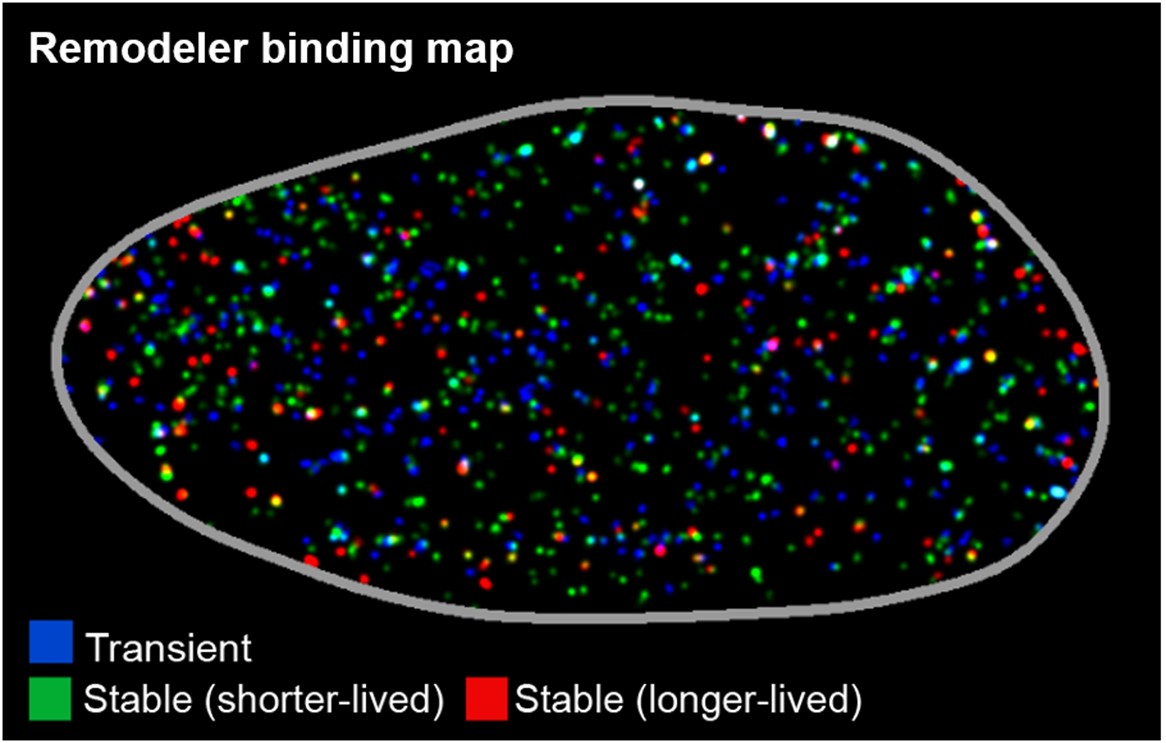
A research team led by Assistant Professor Ziqing Winston ZHAO from the Department of Chemistry and the Centre for BioImaging Sciences at NUS has uncovered a previously hidden landscape that governs the intracellular organization and dynamics of SWI/SNF chromatin remodelers, an important class of protein complexes that control genome access inside the cell. By revealing how such dynamics could go awry in mutant variants of the remodeler proteins linked to diverse human cancers, the insights from this study could potentially serve as a uniquely valuable set of quantitative signatures for these cancer-associated remodeler mutations.
They used an advanced single-molecule imaging approach to quantify the dynamics of the fully assembled SWI/SNF remodeler complex for the first time in live human cells, resolving distinct modes of intracellular movement and DNA-binding across different timescales. To better understand the spatial organisation of such dynamics, they also devised a super-resolution mapping strategy, called STAR, that enabled them to reveal numerous nanoscale “hotspots” in the cell nucleus where multiple longer-lived DNA-binding events preferentially cluster, ultimately leading to sustained productive chromatin remodelling at these sites. Finally, by systematically comparing across a variety of remodeler mutants implicated in different cancers across tumour types, the team identified multi-modal changes in DNA-binding dynamics unique to each mutant. These findings establish the biophysical basis for aberrant remodeler–chromatin interactions in cancer, and could potentially lead to a new set of diagnostic markers for cancer-associated remodeler mutations. The work was published in the journal Nature Communications.
Prof Zhao said, “Our findings provide first-of-its-kind quantitative insights into the organisation and dynamics of this critical intracellular process in both space and time, unveiling a much broader regulatory landscape at work than previously thought. The approaches developed in our study have also empowered us to visualise, quantify and map a wide range of other DNA-interacting processes, and pave the way to further investigate the in vivo implications of chromatin remodelling misregulation in disease contexts.” Read the full article here.

(a, b) Live-cell single-molecule imaging of the fully assembled SWI/SNF chromatin remodeler complex reveals distinct modes of diffusion and DNA-binding across different timescales. (c) STAR mapping identifies numerous nanoscale remodeler binding “hotspots” across the cell nucleus, leading to (d) an integrated structure-dynamics model where successive longer-lived binding events within these “hotspots” result in sustained productive remodelling. [Credit: Nature Communications]
